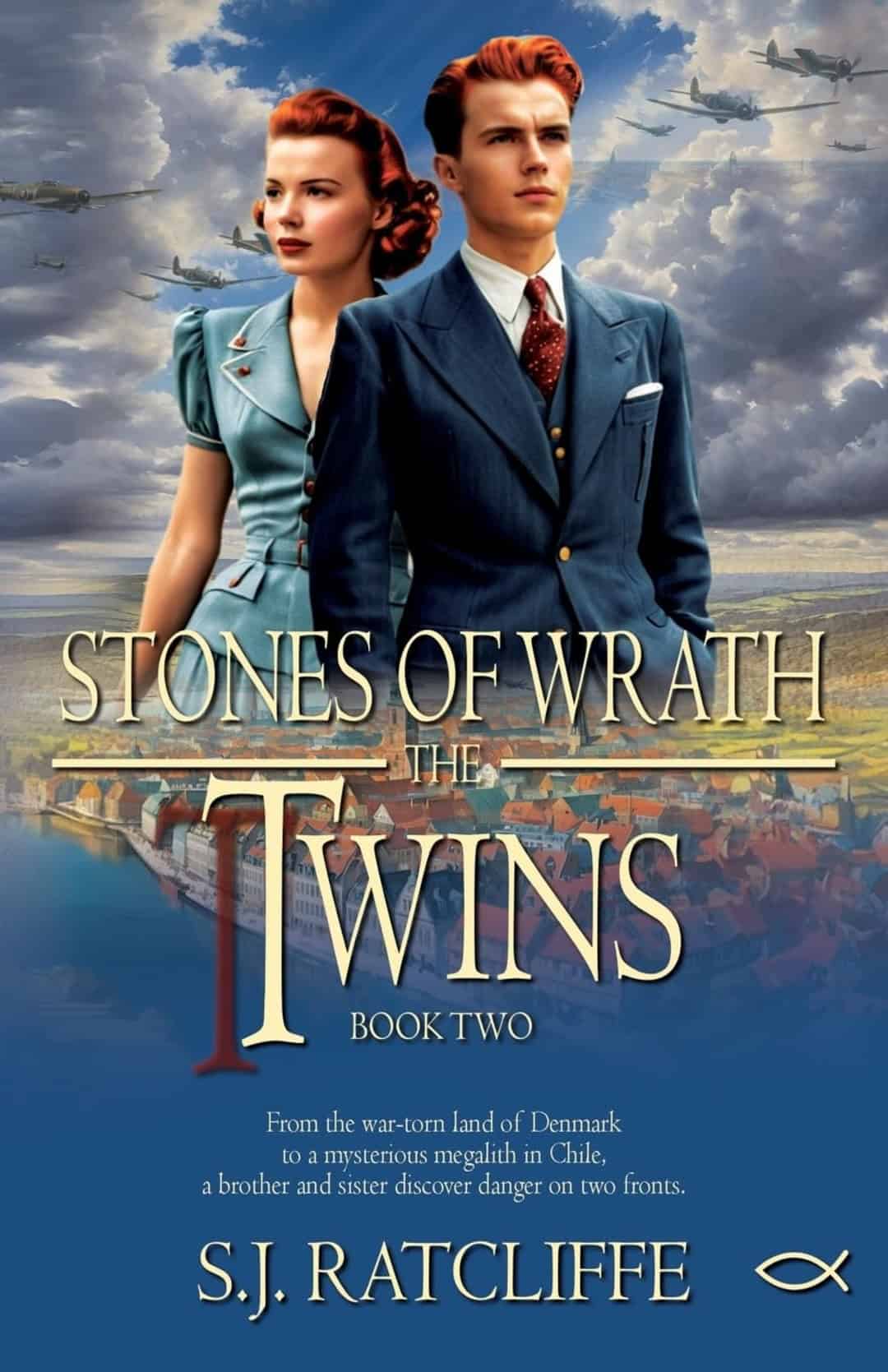At the distance of 80 years, the events of World War II in Europe are rapidly becoming the stuff of legend shrouded in the mists of time. If we lose the hard-won lessons of that era, we shall have to pay a high price to relearn them. That is why history is important. S.J. Ratcliffe takes a literary approach to the lessons of World War II in Stones of Wrath: The Twins, the second volume of her historical fiction series. In this work, she demonstrates once again the power of historical fiction in transmitting the lessons of the past to new generations.
Ratcliffe picks up where she left off in her first novel, Stones of Wrath: The Tapestry. At the end of World War I, Danish archaeologist Mikkel Jacobsen and his English wife Ivy begin their wedded life in Argentina, where he takes a position at the University of Buenos Aires. They take with them the mysterious artifact they acquired in Ivy’s hometown of Sheffield. As the new custodians of these “stones of wrath,” they join a long line of dedicated men and women who have safeguarded the artifact since ancient Israel became a nation.
With that as an introduction, Ratcliffe carries her story through the interwar years and into the action and intrigue of World War II. The Twins relates the adventures of Christian and Ruby, the twin children of Mikkel and Ivy. In the midst of the war, Christian sails to his father’s native Denmark as the representative of the family shipping business. Ruby remains in Argentina, but on receiving news that her father has disappeared while on an archaeological expedition, sets off on a quest to find him.
The Twins is two adventure novels in one. The Jacobsen family is the link between the stories set on opposite sides of the world. In Denmark, Christians became embroiled in the efforts of the Danish Underground to rescue the nation’s Jewish citizens from deportation to Nazi concentration camps. Historically, this national effort took place under the noses of the Nazi occupiers in the fall of 1943, and nearly all the Danish Jews were spirited away to neutral Sweden. Ratcliffe captures the era and the action superbly, making The Twins a first-rate World War II action novel.
Ruby’s story takes on the nature of a spy novel. She and her traveling companion Alejandro set out on their quest because they fear Mikkel is in danger from ex-patriot Germans whose loyalty lies with Adolf Hitler. As they travel west to the Andes Mountains, they realize Nazi agents are following them. Before long, they learn of the coordination between Argentine Nazi sympathizers and Hitler’s agents to prepare a haven for Hitler’s henchmen in case the Third Reich loses the war. That, too, is a historical reality: many Nazis did flee to Argentina after World War II, and rumors persist that Hitler himself spent his last years there.
As in her first novel, Ratcliffe devotes considerable effort to developing her characters in the context of the time period. Mikkel, Ivy, and others we know from her first novel have aged gracefully and grown through the interwar period as we would expect. The extended family and friends make cameo appearances that update us on what has happened over the years. New characters fit naturally into this expanding literary community. Danish police officers, Scottish tradesmen, Argentine priests, and Chilean farmers populate the novel like a 1940s travelogue. Most of these new characters are the kind of people we would like to have as neighbors. Some, like the notorious Adolf Eichmann, are actual historical figures whose appearance is consistent with their historical roles – in Eichmann’s case, directing the Final Solution of exterminating Europe’s Jewish citizens. Others, like the Argentine Juan-Tomas Perez, are based on real people (Perez is based on Juan-Carlos Goyeneche, an Argentine Nazi sympathizer).
These historical figures add to the realism of Ratcliffe’s work, reminding us that horrific events like the Holocaust really happened and that heroic people of character and principle arose to resist it. It was not only the Danish Resistance who played an active role in this effort but ordinary people around the world who saw evil infiltrating their communities and asked themselves what they would do about it. That is a motif of Ratcliffe’s work, particularly in the South American setting of The Twins. Ruby’s quest across Argentina and into Chile is also based on a series of historical events, starting with the journey of the author’s grandfather over the same route by horseback early in the 20th century. Her adaptation of that bit of family history creates an ideal setting for the intrigue and ethical dilemmas that confront her characters.
At the root of this action-adventure romance novel (yes, Ruby and Christian both find love during their exploits!) is the Judeo-Christian foundation of our civilization. Ratcliffe develops this initially in the relationship of the Jacobsen family with Moshe and Ayala Levy, Jewish émigrés from Russia. The interaction of this Christian family with their Jewish friends depicts Christian-Jewish relations as they should be, based on mutual respect and shared worship of the God of Abraham, Isaac, and Jacob. It is that relationship that gives Christian the resolve to join the effort to rescue Denmark’s Jewish citizens and inspires Ruby to thwart the Nazi plot in her Argentine homeland.
And, of course, that mysterious ancient Israelite artifact lies at the heart of the action. What is it about this artifact that attracts the attention of villains like Adolf Hitler who seek to dominate the world? And what is it about the artifact that inspires hope in its guardians and encourages those in their circle to help them? The answers to those questions are among the historical lessons S.J. Ratcliffe shares with us in this exciting work of fiction – and which she promises to develop even further in her third novel.
Stones of Wrath, Book 2: The Twins is available on Amazon.com, and through the author’s website at https://www.sjratcliffeauthor.com/.





